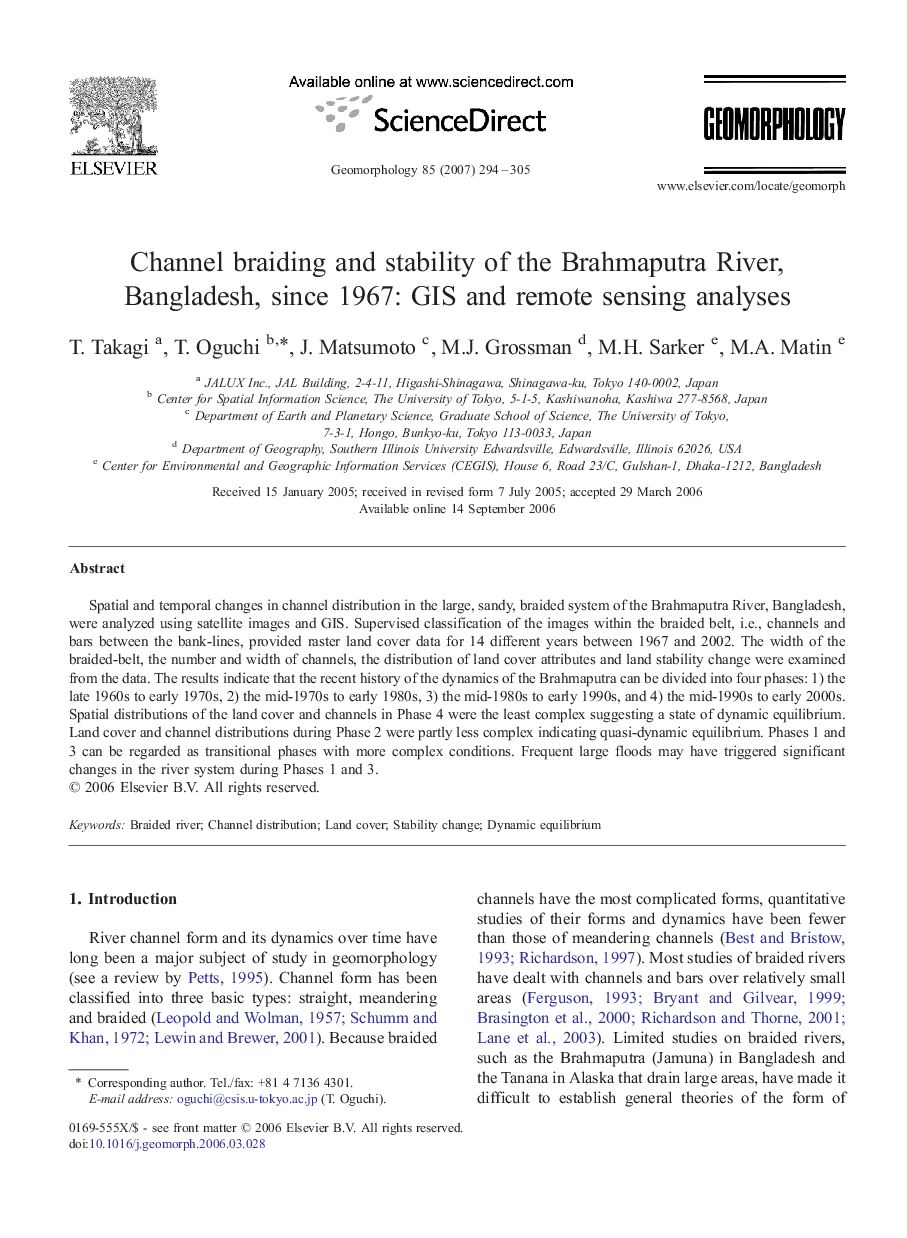| Article ID | Journal | Published Year | Pages | File Type |
|---|---|---|---|---|
| 4687354 | Geomorphology | 2007 | 12 Pages |
Abstract
Spatial and temporal changes in channel distribution in the large, sandy, braided system of the Brahmaputra River, Bangladesh, were analyzed using satellite images and GIS. Supervised classification of the images within the braided belt, i.e., channels and bars between the bank-lines, provided raster land cover data for 14 different years between 1967 and 2002. The width of the braided-belt, the number and width of channels, the distribution of land cover attributes and land stability change were examined from the data. The results indicate that the recent history of the dynamics of the Brahmaputra can be divided into four phases: 1) the late 1960s to early 1970s, 2) the mid-1970s to early 1980s, 3) the mid-1980s to early 1990s, and 4) the mid-1990s to early 2000s. Spatial distributions of the land cover and channels in Phase 4 were the least complex suggesting a state of dynamic equilibrium. Land cover and channel distributions during Phase 2 were partly less complex indicating quasi-dynamic equilibrium. Phases 1 and 3 can be regarded as transitional phases with more complex conditions. Frequent large floods may have triggered significant changes in the river system during Phases 1 and 3.
Related Topics
Physical Sciences and Engineering
Earth and Planetary Sciences
Earth-Surface Processes
Authors
T. Takagi, T. Oguchi, J. Matsumoto, M.J. Grossman, M.H. Sarker, M.A. Matin,
